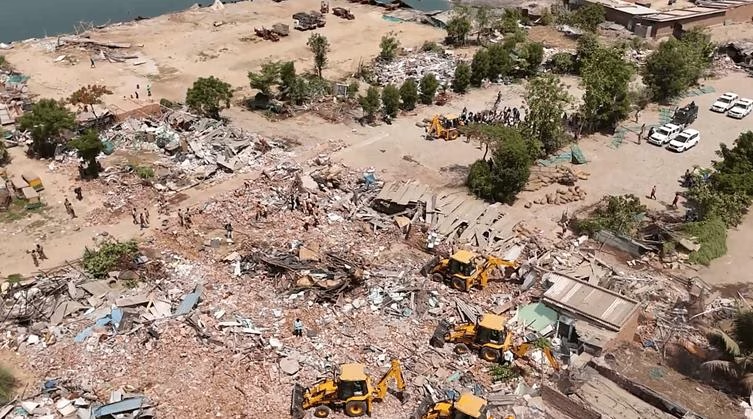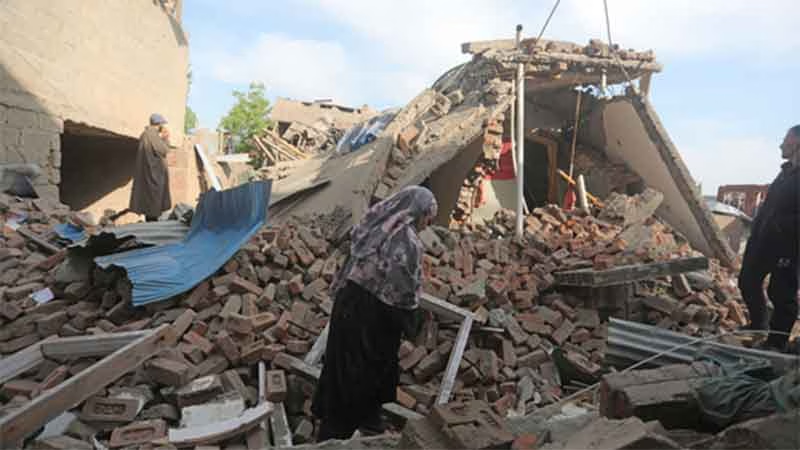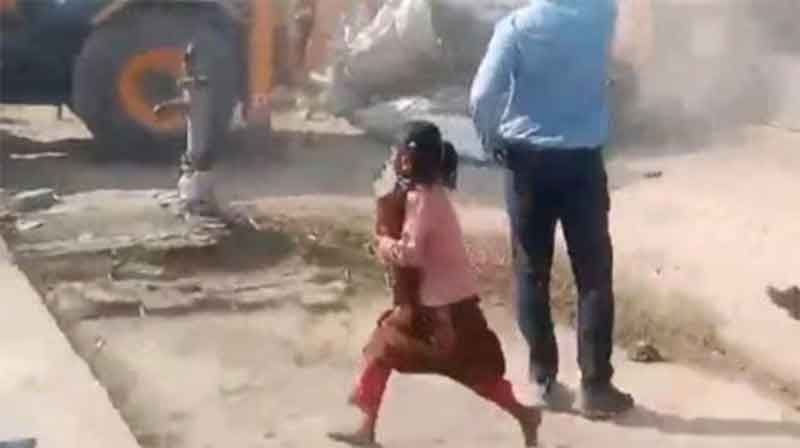A timeline Capturing Neglect of State-led Development and Continuous Demolitions and Displacements in the Wards where Chandola na Chappra locality is situated, and where the Largest Demolition Drive in Ahmedabad was Conducted
The recent demolition drives near the Chandola lake area, can be partly located in the fact that little attention was paid to the wards of Dani Limda, the wards in which Chandola lake and settlements on its peripheries are situated, and which faced the bulldozer action on April 30th.
This article points towards how there was always a lack of state’s attention towards developing the ward and the locality of Dani Limda, in a planned manner, unlike how the state and the corporation has developed wards such as Navrangpura, Naranpura, Paldi, Ellisbridge, amongst others.
Dani Limda ward had a population of approximately 2.5 lakhs, one of the most densely populated wards in the city of Ahmedabad. However, the ward has remained largely away from state-led development because the status of land, properties, and tenures of residents were never formalised/legalised. It is therefore obvious that when demolitions and evictions are conducted, the residents and their settlements are called ‘illegal’ overnight and bulldozer action is justified in name of clearing up the cities, driving out illegal encroachers, and a vision for beautification of a lake alongside which thousands of people resided since many years. The demolitions drives cleared a total of 12,500 residential, commercial and religious structures reduced to rubble, and four lakh square metres of land cleared.

Photo from the article in The New Indian Express, published on April 30th, authored by Dilip Singh Kshatriya
Following timeline capture the events around Dani Limda ward and reveal how the settlement of Dani Limda have remained (un) developed over many years, albeit outside the ambit of state’s urban planning and development:
1969: First settlements in the area of Dani Limda
Urban researchers have pointed out that the first settlement around Chandola lake happened after Hindu-Muslim riots in 1969. “After these riots, the Jamaat-e-Islaami, a Muslim charity, rehabilitated some of the riot affected Muslims on land belonging to the Karaliya Group, a construction firm owned by Abdul Latif, a noted gangster and bootlegger. This land was located on the city’s southern periphery on the eastern side of the river, behind Chandola Lake. The locality came to be known as Millat Nagar”. This is highlighted by urban researchers Renu Desai, Darshini Mahadevia, Shachi Sanghvi, Suchita Vyas, Rafi Malek, Sharif Mohamad Malek, in their paper titled “Bombay Hotel: Urban Planning, Governance, and Everyday Conflict and Violence in a Muslim Locality on the Peripheries of Ahmedabad.
1990s: While there were private housing in forms of chawls and chaalis were coming up, the area still remained very much a ghetto, outside the ambit of state’s urban planning and susceptible to land grabbing by land mafias
Even though some schemes and housing societies were developed, the area remained largely inhabitable. However, the adjoining area of Shah-e-Alam had huge population that was spilling over on the Dani Limda area as well. The area also attracted construction of small-scale textile and chemical factories.
2002: Impact of 2002 Gujarat riots led to emergence of relief camps and resettlement colonies in Dani Limda, but again there was little attention by authorities in providing aid and relief or shelter
After Juhapura, Bombay hotel emerged as the second largest urban ghetto in Ahmedabad. Urban researchers have pointed out “while Juhapura has a socio economic mix, Bombay Hotel is almost entirely poor, lower class and lower-middle class. The men and women in the area are employed in nearby small industries like dying, embroidery, stitching; many women work as domestic maids in other, mostly Muslim, areas of the city”.
2013: Implementation of Town Planning Scheme 38 (2)
Under the Land Acquisition and Town Planning Scheme of Gujarat government, Town Planning Scheme (TPS) 38(2) was proposed for the area. The area, at this time, suffered from so-called ‘illegal’ development and densification. The sanctioning and implementation of the TPS while brought hope to many residents to have secured tenure and services in future, many feared that their houses and shops would be demolished if the TPS was implemented.
2015: New TPS announced since the earlier TPS involved major demolitions
Due to mobilizing and opposition of many whose properties came under demolition, there was a settlement reached between the residents and the AMC. The AMC agreed to make a new TPS which would involve very few demolitions, but which will not have the same services layout and quality as other TPS. The AMC officials said this was the cost that community will have to suffer.
2016: Activist Kaleem Siddiqui files PIL for removal of Pirana landfill in the Gujarat high court
The seriousness of the health hazards that the Pirana landfill site has caused to the local residents is brought to the surface, as court sends notice to the AMC and State government to look into the concerns. Piran landfill site, which has currently been cleared up, was one of the largest landfill sites in the country and was located in the same ward i.e. Behrampura
2019: NGT order directing AMC to remove the landfill in a planned, phased manner
There is a relief and hope that planned development and hygienic conditions will prevail because of this, but there was always a fear of displacement for the local community around Piran and Chandola.
30th April, 2025: Post Operation Sindoor, 4000 structures were razed near Chandola lake
Media reports and politicians citing residents near Chandola lake as illegal, Bengali-speaking, Bangladeshis, terrorists; launched a large-scale demolition drive on April 30th, 2025, wherein 4000 structures were demolished in the morning hours
The above timeline captures the Dani Limda ward, wherein localities such as Chandola na chappra, Shah-e-alam, Bombay hotel, Pirana, are located, have always been susceptible to displacements and demolitions. At the same time, there was hardly any attention by state authorities, since the time when first settlements came up, to develop the Behrampura ward in a planned manner.
Subscribe to Our Newsletter
Get the latest CounterCurrents updates delivered straight to your inbox.
Bhargav Oza is an urban and labour researcher based in Ahmedabad. He had widely gathered data around the Dani Limda ward during his M.Phil dissertation, a snapshot of which is mentioned in this article, to reveal how neglected localities such as Chandola na Chapra, and nearby localities in the ward of Dani Limda, were already susceptible to demolition drives, before the largest demolition drive was conducted on April 30th, 2025.















































